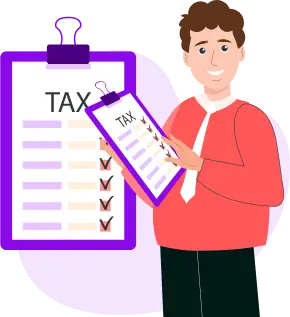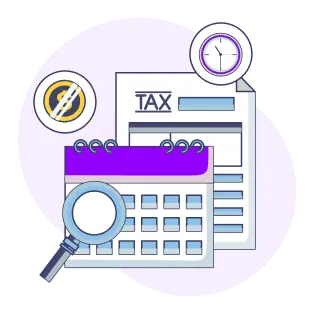| SR. | Nature of information | Details |
|---|---|---|
| 1. | Status (individual; company, firm etc.) of the assessee | |
| 2. | Permanent Account Number (PAN) of the assessee if allotted | |
| 3. | Nationality (in the case of an individual) or Country or specified territory of incorporation or registration (in the case of others) | |
| 4. | Assessee's tax identification number in the country or specified territory of residence and if there is no such number, then, a unique number on the basis of which the person is identified by the Government of the country or thespecified territory of which the assessee claims to be a resident | |
| 5. | Period for which the residential status as mentioned in the certificate referred to in sub-section (4) of section 90 or sub-section (4) of section 90A is applicable | to |
| 6. | Period for which the residential status as mentioned in the certificate referred to in sub-section (4) of section 90 or sub-section (4) of section 90A is applicable |
Savetaxs Form 10F Generator
Information to be provided under sub-section (5) of section 90 or section 90A
No queues. No CA needed. Just file and relax.
File your Return
Form 10F is a document filed by an individual or a company that is generating revenue from a non-resident country to claim the benefits of a Double Taxation Avoidance Agreement (DTAA). It is a self-declaration tax form used by non-resident (NR) taxpayers to claim the benefits of DTAA if their Tax Residency Certificate (TRC) lacks some specific, crucial details.
How Does SaveTaxs Help in Generating Form 10F?
Using the tool is easy and user-friendly, as we have streamlined the entire process of checking Form 10F filing eligibility into just four easy steps:
- Step 1: Provide your basic details, including your name, country of residence, nationality, etc.
- Step 2: Enter your tax identification number (TIN) and the validity period of your TRC.
- Step 3: Now, click on "Generate Form 10F.
- Step 4: After that, you can instantly download a PDF copy of your complete Form 10F with all the accurately filled information.
- Step 5: Submit the Form to the income payer or bank to claim the prescribed TDS exemption under the DTAA treaty.
Who Can Use The Tool?
Our tool is specifically designed for:
- NRIs who are eligible to claim the DTAA treaty with India.
- Anyone who requires a fast and accurate Form 10F for compliance.
- Individuals who wish to avoid TDS deductions at higher rates on NRO accounts or investments.
- NRIs or foreign residents who are receiving interest, rent, or capital gains in India.
- A foreign company with Indian operations, even if it lacks a permanent establishment.
- NRIs who are seeking employment in India, including freelancers, consultants, or those receiving income from Indian investments.
- Any other entity, like a partnership, trust, or association, that receives income from India.
What are the Benefits of Filing Form 10F for NRIs?
Form 10F plays a crucial role in the international taxation system. The taxpayer can avail of the benefits of DTAA and ensure that they do not pay taxes twice on the same income in two different countries. Filing Form 10F offers several other benefits as well to NRI taxpayers, which are as follows:
- NRIs can avoid higher rates of tax deductions that are applicable to those who don't possess a PAN.
- You can claim tax deductions or even exemptions on any eligible income that you earn in India.
- Additionally, you can avoid double taxation of your income and avail of all the benefits that are offered by the double tax avoidance agreement (DTAA).
Are There Any Exemptions and Limitations of Filing Form 10F?
Although Form 10F online filing is mandatory for non-residents who are claiming benefits under the DTAA treaty, there are certain exemptions and limitations as well, such as:
- TRC Exemptions: Certain countries might not need a TRC (Tax Residency Certificate) for income that is under a specific threshold, which potentially impacts Form 10F requirements.
- DTAA Terms: In specific situations, the DTAA terms may already apply to certain income types that eliminate the need for filing Form 10F.
What Documents Are Required to File Form 10F?
There are several documents that you must provide to be eligible to file Form 10F online on the official portal of the Income Tax Department, such as:
- Address in your home country
- Tax Residency Certificate (TRC)
- Tax Identification Number (TIN)
- Digital Signature Certificate (DSC)
- Permanent Account Number (PAN) in India
- Permanent address proof in your home country
- Valid contact details, like email, phone number, postal address, etc.
- Proof of identity confirming the legal status of the entity (individual or company).
To Conclude
Form 10F is a crucial document for a non-resident taxpayer to claim the benefits of the DTAA treaty with India. It helps them avoid double taxation and ensure compliance with all the rules and regulations. Submitting Form 10F along with a TRC will help you save a significant amount on tax and meet all the Indian tax obligations significantly. Using the Savetax Form 10F calculator tool can help an NRI in simplifying and automating the entire process of filing Form 10F. You can ensure compliance with the Indian tax laws, reduce the risk of errors, save time, and claim the DTAA benefits easily and accurately without doing any complex manual calculations.
- Income Tax Calculator
- Residential Status Calculator
- Form 10F Generator
- Capital Gain Indexation Calculator
- Calculate DTAA Tax
- Section 80C Deduction Calculator
- Capital Gains Rate & Period of Holding Calculator
- TDS Calculator
- HRA Calculator
- Section 80D Deduction Calculator
- Capital Gain Tax Calculator
- Form 15CA/CB Wizard
- Repatriation Calculator
- 401(K) Calculator
- Federal Tax Calculator
- Tax Bracket Calculator
- Self Employment Tax Calculator
- Holiday and Tax Calendar
Frequently Asked Questions
No matter what your source of income is, we've got you covered. There’s a plan for everybody!
As per the Indian laws, Form 10F is a document that the Indian Tax Department asks non-residents to fill out to avoid paying taxes twice using the DTAA (Double Taxation Avoidance Agreement). It is a self-declaration form used by NR (non-resident) taxpayers to claim the benefits under the DTAA if their Tax residency certificate (TRC) lacks some important details.
Form 10F is required for NRIs to claim and avail of all the benefits of a double taxation avoidance agreement (DTAA). It includes avoiding paying taxes twice on the same income, tax exemptions, and reduced tax rates on interest.
Yes, an NRI can now file Form 10F online without the need for a PAN. They can register under the new option, which is "Non-residents not holding and not required to have PAN" on the Income tax portal and file Form 10F.
Yes, Form 10F can be filed online through the Income Tax Portal.
No, Form 10F cannot be filed without a DSC, as a Digital Signature Certificate (DSC) is mandatory to file Form 10F online on the official portal of the Income Tax Department.
A tax residency certificate's (TRC) validity will depend on the country that is issuing it and the terms under which the certificate was issued.
In such cases, you will get to enjoy the tax treaty benefits. The decision is completely up to the practitioner if they consider an old TRC based on the promise that you will get a new one soon. However, the tax department has the authority to disagree.
Yes, a foreign language tax residency certificate (TRC) is valid in India. However, they must be accompanied by a certified English translation to be accepted by the Indian tax authorities. The translation must be duly attested by the issuing authority, a notary, or the respective country's embassy or consulate.
